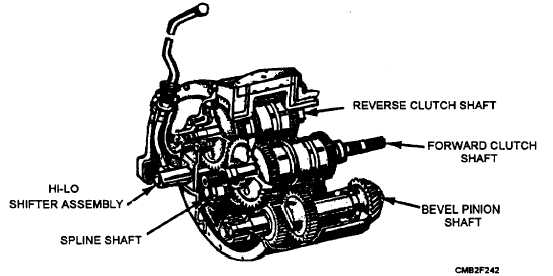CHAPTER 6 CONSTRUCTION EQUIPMENT POWER TRAINS
INTRODUCTION
Learning Objective: Identify the operational characteristics and components of drive trains, track assemblies, and track frames that are common to construction equipment power trains. Describe the operation of a winch. Identify the characteristics and maintenance of wire rope.
The construction equipment used by the Navy are equipped with power trains that are similar in many ways to the automotive vehicle power trains described in chapters 4 and 5. However, factors, such as size, weight, design, and use, of the construction equipment require power trains that vary greatly in configuration.
DRIVE TRAINS
Learning Objective: Identify the operational characteristics and components of construction equipment drive trams.
There are numerous types of equipment used in construction, from crawler tractors to excavators. However, the way power is distributed varies from piece to piece. The most common drive trains used in modern construction equipment are the mechanical and the hydrostatic drive trains.
MECHANICAL DRIVE TRAIN
The mechanical drive train found in construction equipment is similar to that of the automatic transmission in that a transmission is used in conjunction with a torque converter and shifting is accomplished hydraulically when the operator moves the range selector lever.
Power Shift Transmission
The power shift transmission (fig. 6-1) uses a torque converter and is designed to provide high-speed shifting through hydraulically actuated clutches. The transmission has two forward and two reverse speeds in both high and low ranges. The hi-lo shifting lever mounted on the transmission front cover controls shifting from one range to another.
NOTE
The principles of a torque converter are presented in chapter 4 of this TRAMAN.

Figure 6-1. - Power shift transmission.
Continue Reading